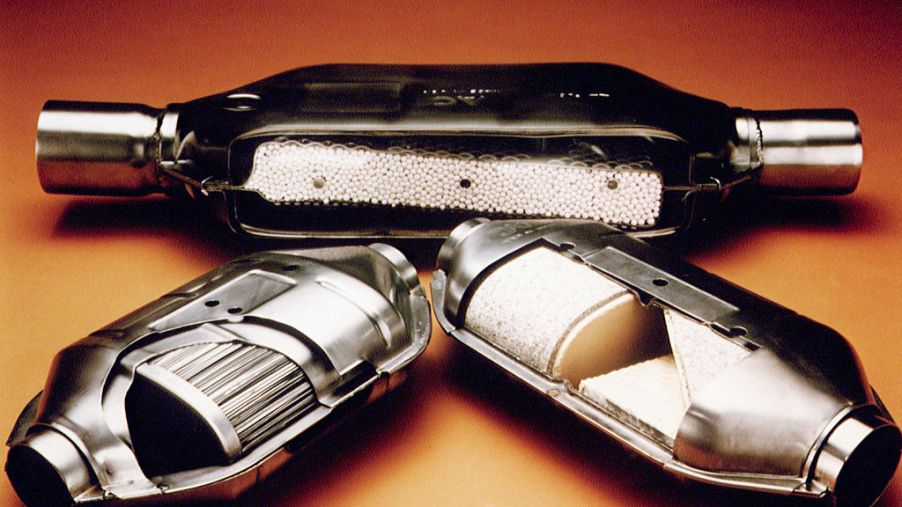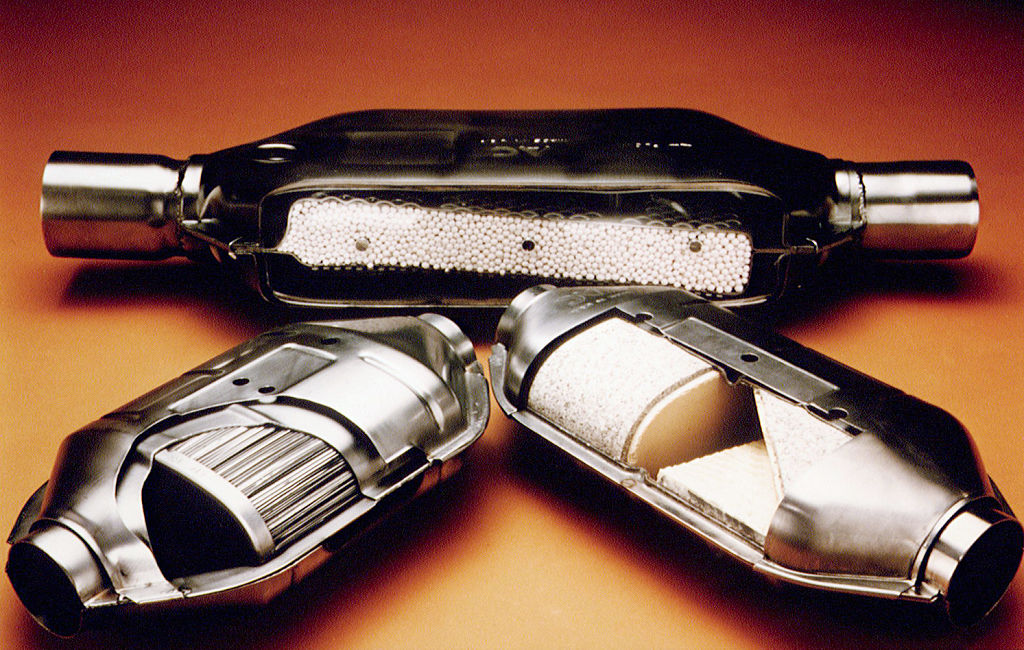
What Your Catalytic Converter Does and Why You Should Replace It Now
The EPA is getting more serious about emissions, especially from heavy-duty trucks. While it’s good news for those who have to suffer smog and coal-rollers, some aftermarket companies and automakers are worried it may affect their business. But there’s a new problem on the horizon. It’s not from the EPA, but emissions and air pollution are involved. And it could have some drastic implications for car, SUV, and truck owners. It’s to do with your vehicle’s catalytic converter.
What your catalytic converter does
As Engineering Explained and Donut Media explain, ICE vehicles, diesel or gasoline, run by reacting fuel with oxygen in the air. While cars and trucks have gotten cleaner, emissions-wise, over the years, this combustion still results in waste products. Carbon monoxide and dioxide, NOx, and soot are the common by-products, with diesel engines also producing sulfur by-products called SOx.
Many of these chemicals are either downright toxic on their own or create harmful conditions when they hit the open air. That’s why California’s air quality standards are so strict compared to the rest of the US: its geography concentrates vehicle emissions and makes these compounds even more dangerous.
This is where the catalytic converter comes in. Inside is a kind of ceramic honey-comb, which holds several precious metals. These are usually platinum, rhodium, and palladium, and they function as catalysts. Basically, they help the noxious gases, like CO and NOx, react with oxygen left in the exhaust flow. This converts the gases into less toxic forms. The ceramic not only holds the catalysts in place, it also gets hot and stays hot so the catalysts can do their jobs.
Because oxygen is so important for proper catalytic converter operation, modern vehicles have sensors in place throughout the exhaust to monitor how much of it is present. If you’ve ever had to have an O2 sensor replaced, that’s what it was doing. Using these sensors, the vehicle’s computer can monitor if the fuel-to-air mix is too rich or lean, and adjust the fuel injection to compensate.
If it didn’t, not only would your engine burn more fuel and foul its spark plugs, your catalytic converter would stop working.
Why catalytic converters fail

Catalytic converters actually don’t fail that often, according to Viper Motorsports. Eventually, the internal components do fail with age, Advance Auto Parts and Machine Design explain, but many converters last the lifetime of the vehicle, or roughly 15 years.
However, catalytic converters can fail early if they clog. Unburned fuel in the exhaust can get stuck in the ceramic honeycomb. Not only does this make the converter less effective, there’s raw fuel sitting in a hot place with air blowing past it. Eventually, the fuel ignites, melting the ceramic and ruining the converter.
NAPA also reports that coolant and oil can leak into the exhaust from leaking gaskets. They may not burn as hot as the fuel, but they can still clog the converter.
All this means replacing the catalytic converter. Which isn’t cheap—and it’s set to get even pricier.
Why catalytic converter replacement may get more expensive
Catalytic converters, due to their precious metal content, are commonly stolen. Thieves literally saw trucks’ tailpipes off to get at them. There are also numerous YouTube tutorials showing how to then extract the metal. These thefts are common enough that some owners, according to one r/JustRolledIntoTheShopuser, are welding protective steel cages around their catalytic converters.
Depending on the vehicle, the “cats” can sell for up to $4,00. But that number may soon get even higher. According to Reuters, palladium is over 5 times as expensive as it was in January 2016. One ounce now costs $2,500; before now, prices were never more than $1,100.
The problem, Autoblog and Jalopnik explain, is that mines simply can’t keep up with the demand. Experts predict that 10 million ounces of palladium will be needed in 2020 and 2021, but total production will barely exceed 9 million. One of the world’s key palladium producers, South Africa, has reported drops in output of roughly 13.5%. There are worldwide stocks of palladium, but they’ve all been tapped over the years. From 2.5 million ounces in 2015 to about 600,000 today.
While some financial experts claim this sky-rocketing price is temporary, this rise in demand is driven mostly by Chinese demand. The country has recently implemented stricter emissions standards, which will require roughly 30% more palladium per vehicle to meet.
There are other metals that can take the place of palladium, like rhodium, copper, even iron and nickel. However, the most effective metals are even more expensive: Jalopnik reports rhodium costs $2,750 per ounce today.
So, if you need to replace your cat, better do it now while it’s still relatively cheap.
When to replace it
There are several signs that your catalytic converter is failing. The most obvious is a strong smell of rotten eggs. One engine emission is hydrogen sulfide, which normally gets converted into sulfur dioxide. However, if the catalysts fail, the hydrogen sulfide builds up and creates the stink.
Cars.com also reports that problems with accelerating, as well as excessive engine heat, can be a sign of catalytic converter failure. But because other car problems can lead to converter failure, identifying and repairing them beforehand is also important.
Oil leakage has its own smell, as well as the physical sign of blue-black smoke from the engine and tailpipe. Coolant leakage causes white smoke. While unburned fuel leakage can be due to a number of problems, the biggest signs are misfires and the dreaded “Check Engine” light.
If any of this sounds like your vehicle, get it checked out ASAP. Replacing a catalytic converter may be expensive, but it’ll get even more expensive soon.
Follow more updates from MotorBiscuit on our Facebook page.


